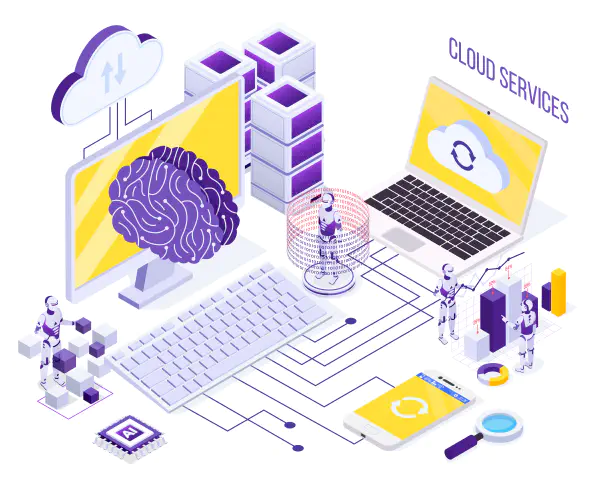Neural networks are computer models that imitate how human brains process information. They look for patterns in large data sets and find relationships between those elements. Then, they make conclusions about what might come next.
In a site search, a neural network model is a similar thing. We use them to understand user intent and recommend relevant pages (or products) accordingly.
Such pattern-detection algorithms have been around for a while. Recently, they have become much more popular due to the ever-increasing ability to understand and analyze vast quantities of digital data.
With more sites using these programs daily, there is an abundance of information available that neural networks can utilize to their advantage.
No longer are we limited to just understanding what words mean or images look like. Now they can get inside our heads and help us find answers by asking questions.

What is a neural network in site search?
Neural networks are a pattern-detection technology that can be used to build AI applications.
On-site search is one of the most common use cases where they are used to understand user intent and recommend relevant pages or products. For a neural network to work, all the data needed to train it is first collected.
Neural networks are often used to analyze text. In this case, this data could be the set of all pages on a website. The next step is to feed the collected data into the neural network. It is where it learns by analyzing every letter and every word and finding connections between all of them.
Once the neural network has learned its way around the document, it can “see” the next piece of information it needs to learn.
How do neural networks work in site search?
Neural networks are similar to human brains in the way they use the input to create an output. In the case of site search, the input is an automated request for terms that will best describe what the user is seeking.
An example could be this: once the neural network “sees” information, it can use all the data it’s collected to create a “what” output such as “you are searching for hotels near your city” and “you are searching for flights to China.”
Next, it looks at the current set of pages on the website and uses the output to create a “from” output such as “from Chicago to Shanghai” and “from Chicago to Phoenix.”
Advantages and disadvantages of neural network-based site search
Neural networks are great at understanding context and can “see” connections between words and images to find links between pages. It is why they can make sense of the content on a given page and find links between pages.
Neural networks can process lots of data at once, meaning that as users are searching for more and more specific terms, the neural network will have plenty of data to analyze. It allows the algorithm to understand user intent better and recommend relevant pages.
Although neural networks can be great at understanding context, they’re awful at making assumptions, causing them to miss out on information that a human would find obvious.
The future of neural networks
Neural networks are a genuine boon to site search. They often replace traditional keyword analysis.
Neural network-based algorithms are capable of understanding context better, making assumptions, and finding links between pages, making them a great tool for power users.
They are not, however, as capable of identifying exact keywords, which is why they are not yet replacing simple keyword analysis completely.
What neural networks do provide, however, is an extremely fast and accurate way to find direct answers to queries that traditional keyword analysis cannot handle.
Conclusion
Neural network-based algorithms are great for finding pages that contain the answers you are looking for rather than pages that use keywords to reference those answers.
Neural networks in site search refer to using artificial neural networks, a type of machine learning algorithm, to enhance the search functionality on a website.
The neural network processes and analyzes large amounts of data from the website’s content and search history to provide more relevant and accurate results to users’ queries.
This approach aims to improve the user experience by offering more personalized and intuitive search results.